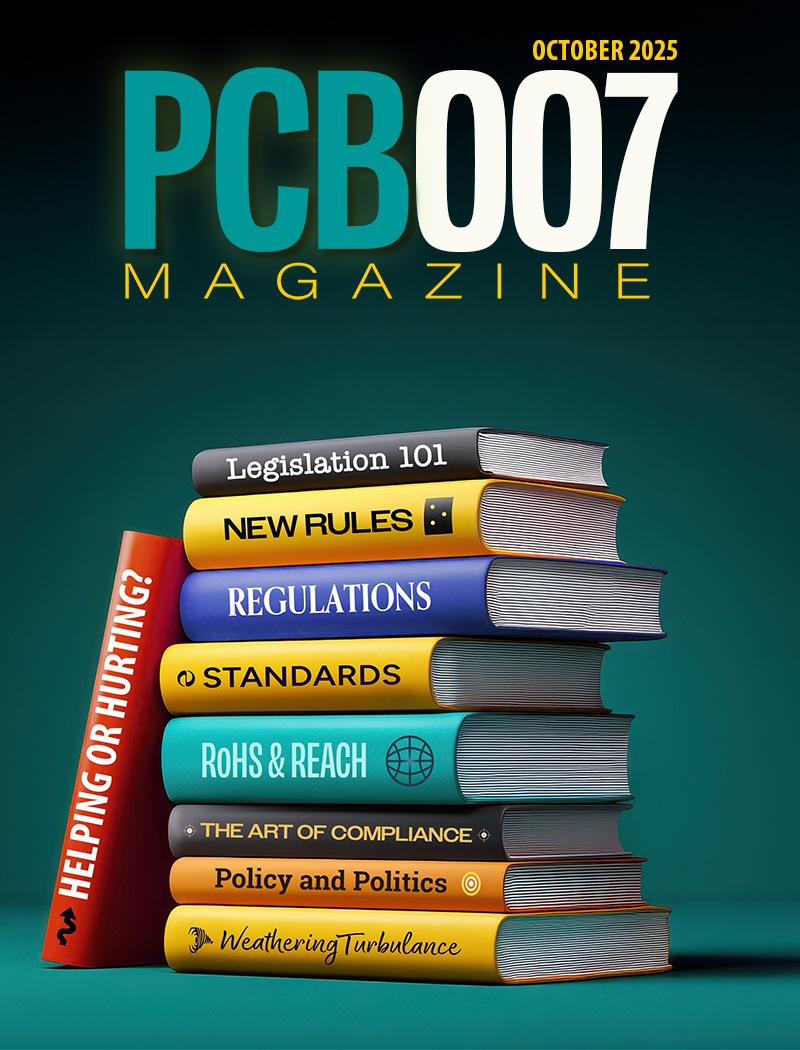-

- News
- Books
Featured Books
- pcb007 Magazine
Latest Issues
Current Issue
The Legislative Outlook: Helping or Hurting?
This month, we examine the rules and laws shaping the current global business landscape and how these factors may open some doors but may also complicate business operations, making profitability more challenging.

Advancing the Advanced Materials Discussion
Moore’s Law is no more, and the advanced material solutions to grapple with this reality are surprising, stunning, and perhaps a bit daunting. Buckle up for a dive into advanced materials and a glimpse into the next chapters of electronics manufacturing.

Inventing the Future With SEL
Two years after launching its state-of-the-art PCB facility, SEL shares lessons in vision, execution, and innovation, plus insights from industry icons and technology leaders shaping the future of PCB fabrication.
- Articles
- Columns
- Links
- Media kit
||| MENU - pcb007 Magazine
Estimated reading time: Less than a minute
Contact Columnist Form
Trouble in Your Tank: Via Hole Filling and Plugging, Part 2
In my previous column, I presented several options with which to accomplish blind and through-hole via filling. In this edition of “Trouble in Your Tank,” I will discuss filling blind vias and through-holes with polymeric pastes.
Via Fill Paste
Often, the phrase “plugging paste” is used to describe the method and material of completely filling blind vias and through-holes. In general, paste filling material selection is at the request of the end user and indicated for a number of reasons. It has been my experience that major OEMs are driving the industry to migrate to the high-Tg/low-CTE plugging paste formulations for high-density applications. In addition, these formulations are of a non-conductive nature that provides a high-quality plugged via that is cost-effective. Limitations abound depending on PCB thickness, via diameter, and paste properties.
To read this entire column, which appeared in the October issue of PCB007 Magazine, click here.
More Columns from Trouble in Your Tank
Trouble in Your Tank: Implementing Direct Metallization in Advanced Substrate PackagingTrouble in Your Tank: Minimizing Small-via Defects for High-reliability PCBs
Trouble in Your Tank: Metallizing Flexible Circuit Materials—Mitigating Deposit Stress
Trouble in Your Tank: Can You Drill the Perfect Hole?
Trouble in Your Tank: Yield Improvement and Reliability
Trouble in Your Tank: Causes of Plating Voids, Pre-electroless Copper
Trouble in Your Tank: Organic Addition Agents in Electrolytic Copper Plating
Trouble in Your Tank: Interconnect Defect—The Three Degrees of Separation


